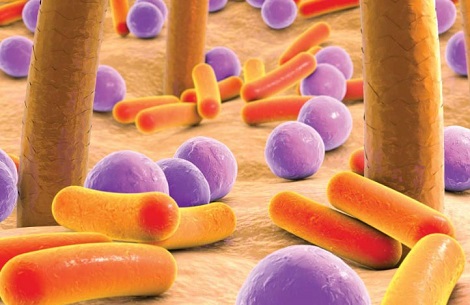Nikhil Prasad Fact checked by:Thailand Medical News Team Jul 21, 2024 1 year, 4 months, 3 weeks, 2 days, 6 hours, 10 minutes ago
Thailand Aesthetics News: Your skin is more than just a protective layer; it’s home to a bustling community of microorganisms including bacteria, fungi, viruses, and mites. This diverse ecosystem, known as the skin microbiome, plays a vital role in maintaining your skin’s health. But what happens to this delicate balance when you undergo common dermatological procedures? A team of researchers from Johns Hopkins University-USA and the University of Utah-USA set out to explore this very question. This
Thailand Aesthetics News delves into their findings on how various skin treatments impact the skin microbiome, shedding light on a relatively under-researched area.
 Certain dermatological procedures can harm your skin’s microbiome
Certain dermatological procedures can harm your skin’s microbiome
What is the Skin Microbiome?
The skin microbiome comprises a variety of microorganisms that live on our skin. These include bacteria such as Staphylococcus, Corynebacterium, and Propionibacterium, fungi of the genus Malassezia, viruses, and mites like Demodex. These tiny inhabitants are essential for protecting against pathogens, educating our immune system, and maintaining skin barrier integrity.
Impact of Dermatological Procedures on the Skin Microbiome
While the effects of skincare products on the skin microbiome are relatively well-studied, the impact of dermatological procedures is less understood. The researchers conducted a scoping review to map out existing studies on this topic.
They found that phototherapy, including UV phototherapy, light therapy, laser therapy, and photodynamic therapy, was the most extensively studied intervention. In contrast, procedures like chemical peels, micropigmentation, and debridement had fewer studies, and no research was found on procedures such as cryotherapy, skin grafts, and dermabrasion.
Phototherapy: A Double-Edged Sword?
Phototherapy, which uses various wavelengths of light to treat skin conditions, emerged as the most frequently studied procedure. It is used for conditions such as psoriasis, eczema, vitiligo, and atopic dermatitis. The review highlighted that phototherapy generally increases microbiome diversity, which is often beneficial. However, the effects can vary.
-UV Phototherapy: This method is effective for reducing pathogenic bacteria like Staphylococcus aureus while increasing beneficial bacteria such as Staphylococcus capitis and Staphylococcus warneri. One study showed that while initial treatments did not significantly change the microbiota, longer-term treatments (6-8 weeks) led to noticeable changes.
-Laser Therapy: Known for promoting wound healing and skin rejuvenation, laser therapy also has antibacterial effects. However, its impact on microbial diversity can vary. Some studies noted a decrease in certain bacteria without significant changes in overall diversity.
-Photodynamic Therapy (PDT): This involves applying a phot
osensitizing agent to the skin, which is then activated by light to produce reactive oxygen species that destroy targeted cells. Studies showed mixed results, with some indicating an increase in diversity and others a slight decrease.
Other Dermatological Procedures
The review also looked at less-studied procedures:
-Chemical Peels: Used to treat acne and signs of aging, chemical peels showed a decrease in certain bacteria like Staphylococcus and Propionibacterium, with varying effects on overall diversity.
-Micropigmentation: This cosmetic procedure, often used to camouflage scars or vitiligo, showed minimal impact on the microbiome in the studied context.
Debridement: This procedure, used to remove dead or infected tissue, did not directly alter the wound microbiome but highlighted associations between certain bacteria and non-healing wounds.
The Need for Further Research
The study emphasized the need for more comprehensive research on how dermatological procedures affect the skin microbiome, especially for less-studied interventions like cryotherapy, skin grafts, and dermabrasion. Understanding these impacts is crucial for optimizing patient outcomes and maintaining skin health.
Conclusion
Our skin’s microbiome is a delicate and complex ecosystem that plays a crucial role in our overall skin health. While some dermatological procedures, like phototherapy, show promise in enhancing microbiome diversity, the long-term impacts of many treatments remain unclear. Further research is essential to fully understand these effects and guide dermatological practices.
The study findings were published in the peer-reviewed journal: Applied Microbiology.
https://www.mdpi.com/2673-8007/4/2/66
For the latest
Thailand Aesthetics News, keep on logging to Thailand Medical News.
Read Also:
https://www.thailandmedical.news/news/lactoferrin-a-new-player-in-the-world-of-aesthetics-and-skincare
https://www.thailandmedical.news/news/breaking-covid-19-news-miami-murine-study-finds-that-sars-cov-2-initiates-cellular-changes-that-leads-to-devastating-skin-alterations-in-the-long-term
